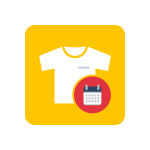How AUTOID Used Pre-Orders to Overcome Stock Challenges

Name
Autoid
Location
Brentwood, United Kingdom
Shop
francesvalentine.com
Name
Location
Shop
Autoid
Brentwood, United Kingdom
autoid.co
Products Used

PreOrder Manager + Notify
Add Pre-Orders to your Shopify store today
AUTOID, a leading provider of aftermarket automotive parts, faced a significant challenge when COVID-19 caused freight delays and stock shortages, making it difficult to keep up with customer demand. However, the company found a solution in pre-orders, which allowed them to continue selling products while managing inventory more effectively. Pre-orders also shaped AUTOID’s business model, allowing them to offer built-to-order products and improve the overall shopping experience for their customers. This new approach has given AUTOID more flexibility and a competitive edge in the market.
Key Insights
Pre-Orders helped AUTOID:
- Keep selling during stock shortages.
- Shaped their business model for selling built-to-order products.
- Improve customers shopping experience and gave the business more flexibility around how they offer products.
When did you start using pre-orders?
We started using Pre-Orders during COVID, we couldn’t get a lot of our products because they were held in China. We needed to keep making money so we put those products on pre-order for a 4 week lead time. Ever since then it’s been imperative to everything we’ve done to be honest. It’s sort of shaped what we do and it adds a lot of flexibility as well.
With Pre-Orders, we can give the customers the option to either wait and buy a product when it comes back in-stock, or to pay upfront and secure a product in the next shipment. This gives us the more choice and variety when it comes to how we’re dealing with customers.
What have been some of the best outcomes for your business since using pre-orders?
Pre-Orders have kind of shaped our whole business model ever since we used it. Because of the industry we’re in, we’ve got very low ticket products which are usually in-stock and go out to people the next day. On the opposite end, we’ve also got very high ticket items that are upwards of a few thousand pounds (£) that are built to order from the supplier.
So for us it’s just me meant that you know when we’re selling, for example a 3D design from a supplier, we can just a product on pre-order and let customers know straight away that it’s going to be about four to six weeks to delivery. Pre-Orders have made life a lot easier for us and have been a huge part of our business.
What advice would you give other merchants who are considering using pre-orders?
If done properly, and you manage expectations in the right way, it’s definitely a better experience. I think obviously one of the drawbacks is that if you’ve of over-promised with your pre-orders, it can also be detrimental. So it’s something that you need to use carefully.
Like for us, we don’t have pre-orders on every product for that very reason. For products that do have pre-order enabled, we’ll arrange the orders with our supplier and by the time they’ve shipped usually we’ve sold more, so generally we rack up the numbers a bit higher to account for that.
Pre-Orders have also been great for our new products, we can just turn pre-order on and get an idea of demand. It definitely does help with forecasting and it’s also better because you can use the notify me feature when it comes back in stock, and get an actual commitment from the customer. So you are a lot more nailed on who’s actually going to buy what. So, since installing pre-orders, that part of our business process have definitely been working better for us.